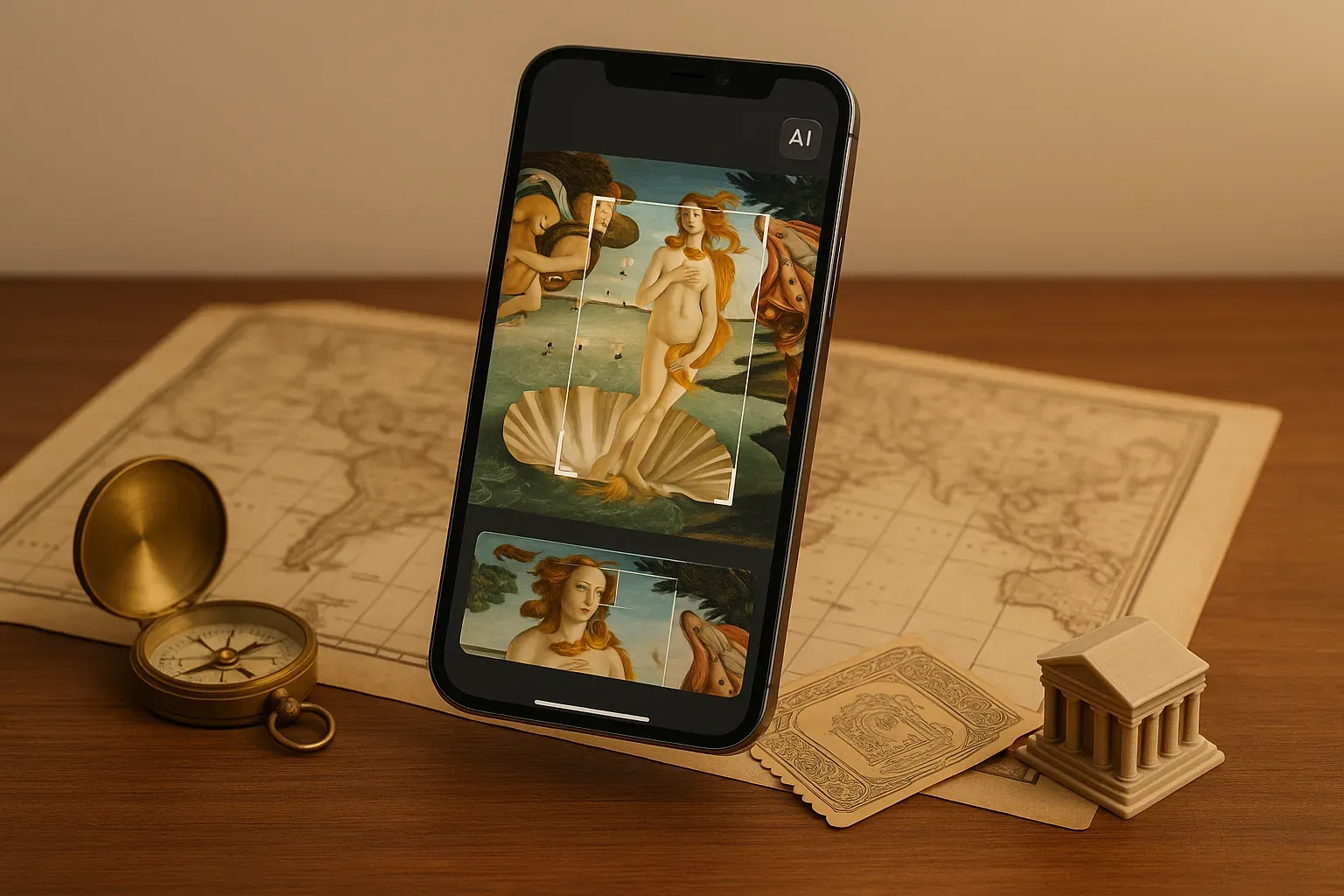Travel history enthusiasts now have powerful AI tools at their disposal, according to leading museum curators and travel technologists. This article examines how applications like Smartify, Google Lens, and ChatGPT are transforming ordinary tourism into rich historical experiences. Experts demonstrate how these accessible technologies create personalized museum visits, enhance walking tours, and provide deeper cultural context without requiring specialized knowledge.
- ChatGPT Enhances Museum Visit Preparation
- Custom Historical Walking Tours With ChatGPT
- Smartify App Creates Personalized Museum Experiences
- Google Lens Transforms Morning Walks Into Discovery
- ChatGPT Simulates Local Art Historians
ChatGPT Enhances Museum Visit Preparation
I’ve spent more than two decades exploring the globe, with seven of those years living in Spain. My passion for Spain led me to launch the Spain Travel Blog (https://mustseespain.com/blog/). Your query piqued my interest because I love using AI as a tool to build out my trip itineraries when I travel.
Ultimately, I use a paid version of ChatGPT to plan out my itineraries and then I also use it to go into detail about my itineraries. When I’m planning a trip that has a must-see museum visit, such as the Prado in Madrid, I’ll use ChatGPT to ask questions about what are the paintings/works of art I must see and why. Learning background and context about the pieces helps me to feel more knowledgeable about them before I visit and this helps me to appreciate them more.
I believe this makes art and history more approachable and easy to understand as it’s a new way of engaging with them. I’m not a big fan of audio guides or tours, so this helps me connect the dots and build my own comprehension of them.
Additionally, I enjoy using Google Arts and Culture, which isn’t an AI tool itself but does rely on AI technology.
Custom Historical Walking Tours With ChatGPT
ChatGPT with location-specific prompts has become my preferred AI tool for travel destination research, particularly for creating personalized historical walking tours that connect art, architecture, and local stories based on my specific interests and available time.
How I Use It Specifically:
Before visiting any city, I provide ChatGPT with detailed prompts like “Create a 3-hour walking route through Prague’s Old Town focusing on medieval architecture and Jewish history, including specific artworks, architectural details to notice, and historical context for each stop.” The AI generates comprehensive itineraries with precise directions, historical background, and cultural insights.
What Makes This Approach Valuable:
The customization capability distinguishes this method from guidebooks or standard tour recommendations. I can request routes that match my walking pace, specific historical periods that interest me, or particular art movements I want to explore. The AI adapts recommendations based on my preferences for crowded versus quiet locations, indoor versus outdoor sites, or morning versus evening lighting for photography.
Specific Example:
For a recent Rome trip, I asked for a route connecting Caravaggio paintings across different churches with historical context about Counter-Reformation art. ChatGPT provided walking directions between six locations, explained the religious symbolism in each painting, and included the historical circumstances that influenced Caravaggio’s commission work – information that would have required hours of research across multiple sources.
The Learning Enhancement:
The conversational aspect allows follow-up questions during exploration. While standing in front of artwork or architecture, I can ask for deeper historical context, artistic technique explanations, or connections to contemporary events that shaped the work’s creation.
Practical Advantages:
The AI generates printable itineraries with specific addresses, suggested timing, and historical background that works offline. Unlike app-based guides requiring internet connectivity, I can access comprehensive information regardless of local wifi availability.
Why It Surpasses Alternatives:
Traditional guidebooks provide fixed information, while ChatGPT creates dynamic, personalized learning experiences tailored to individual curiosity and travel constraints.

Smartify App Creates Personalized Museum Experiences
My favorite way to use AI for learning about the history or art of a travel destination is through AI-powered museum apps like Smartify. Before a trip, I upload the app and explore curated tours, which use AI to recommend exhibits based on my interests and previous engagement. I especially enjoy how it provides contextual information, like historical anecdotes or artist biographies, in a way that feels like a personal guide. On a recent trip to Florence, the app highlighted lesser-known works in the Uffizi Gallery that I would have otherwise missed, and even suggested related artists in nearby museums. What I love most is the way AI adapts to my pace and interests, making the experience both educational and deeply engaging. It’s like having a local expert in your pocket, helping me connect more meaningfully with the culture and art of each destination.

Google Lens Transforms Morning Walks Into Discovery
I live a nomadic lifestyle and when I land in a new place, I like to learn its past the way you’d learn a person — by noticing the small things first. My favorite approach is a slow morning walk with Google Lens as my pocket docent.
Lens turns curiosity into momentum. I’ll snap a frayed fresco corner, a tile pattern, a crest above a doorway (whatever tugs) and let Lens identify the work, the artist, or even just the motif. From there, I follow the thread: the school it came from, the patron who paid for it, the period style it belongs to. In Lisbon, a blue-and-white azulejo panel on a side street led me to an 18th-century workshop and a story about how earthquake rebuilding shaped the city’s visual language. In Mexico City, Lens on a fragment of a mural became a bite-sized tour of the social realism movement I wouldn’t have pieced together on my own.
What I enjoy about Lens is the rhythm it creates. It doesn’t shove a textbook at you; it gives you just enough to ask a better next question. I save the best snippets into a single note titled “How this city learned to look,” with three parts for each find: what it is, why it mattered then, what it says about the place now. By the end of a trip, that note reads like a personal guide I can share with friends — or reshape into a tiny post or two.
It’s simple, human, and it keeps me paying attention.

ChatGPT Simulates Local Art Historians
Before traveling, I enjoy using ChatGPT to simulate the role of a local historian or art guide. I provide the prompt “Show me the street art of Lisbon through the perspective of a punk graffiti artist from the 1990s” to receive detailed stories that enrich my understanding of the city even before my arrival. The application provides me with an entertaining museum guide experience through my mobile device, which avoids dull date-based information.
The research about Palermo’s Byzantine mosaics through ChatGPT delivered an engaging narrative about historical trade paths, artistic battles, and the symbolic value of golden backgrounds during that period. The information delivered through this method surpasses traditional brochure content, which reads like official documents.








